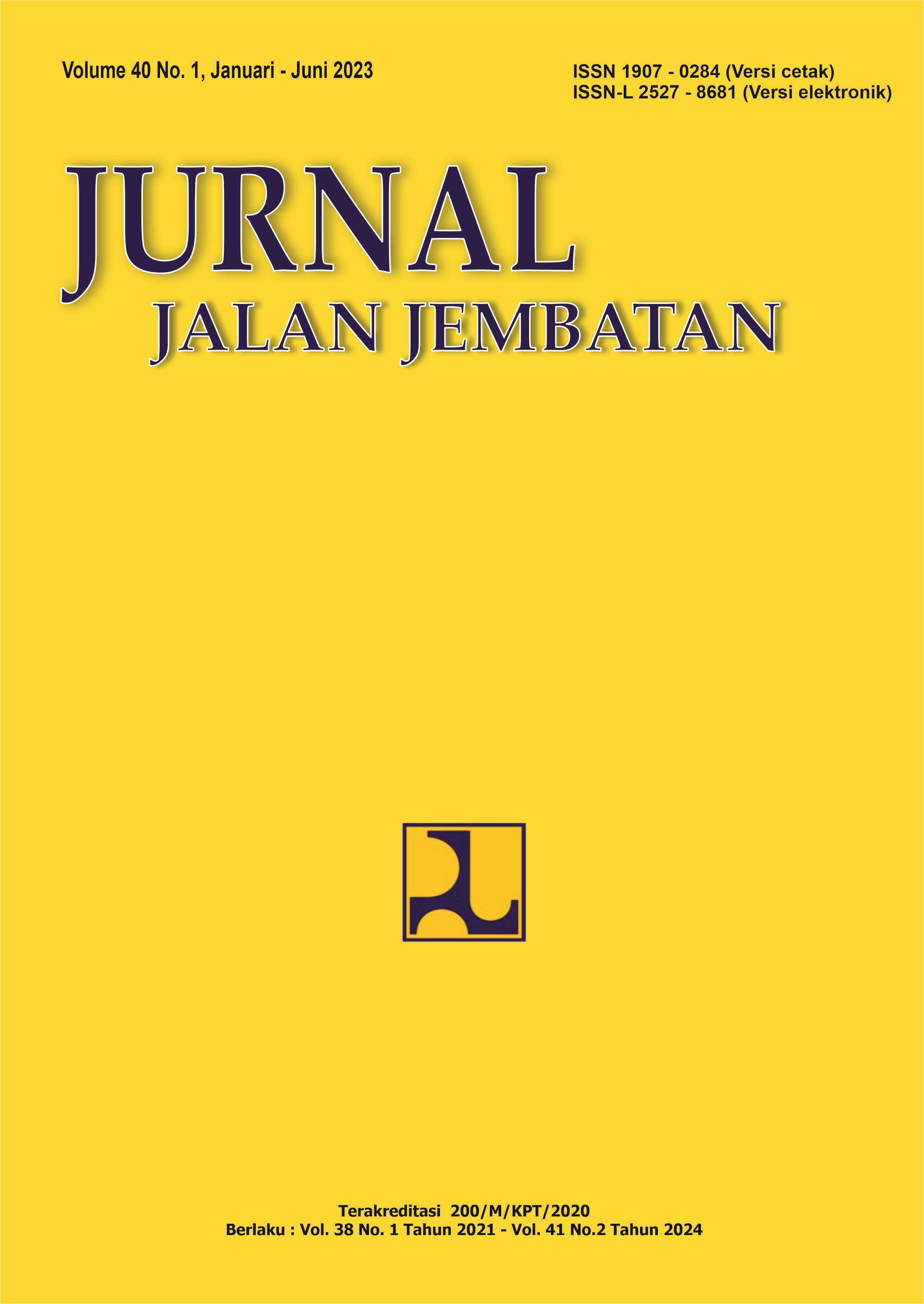THE PERFORMANCE OF POROUS ASPHALT PAVEMENT USING RUBBER AND PLASTIC WASTE
Main Article Content
Abstract
One of the measures to mitigate climate change is to to apply a porous asphalt mixture in pavement construction. The use of porous asphalt mixture is still limited, because of low performance compared to some other asphalt mixtures. A comprehensive study to improve the optimal performance necessary to problems improve the application. This research aims to determine the performance of porous asphalt using plastic and used tires waste mixed into asphalts by using some laboratory testings (both in dry and in wet conditions) according to AAPA 2004. Indirect Tensile Strength (ITS) (both in dry and wet conditions), ravelling, and permeability are obtained with variations plastic and used tires waste levels of 1-3%. There is an increase in Marshall performance, resistance to cracking, ravelling (based on abrasion test) on porous asphalt mixtures with plastic and used tires waste. A porous asphalt mixture with 2% of plastic and used tires waste has produced a good level of durability indicated by the Residual Strength Index (IKS) value and from the Tensile Strength Ratio (TSR) value at all levels of plastic and used tires waste. From the value of porosity and moisture resistance, a decrease in the level of porosity and moisture resistance are shown. The decrease that occurred at 2% plastic and used tires waste level was not too high between dry and wet condition samples. The results of this study recommend that the addition of plastic and used tires waste at 2% can produce a good quality of porous asphalt mixture.
Article Details
Authors who publish in this journal agree to the following terms:
-
Authors retain copyright and grant the journal the right of first publication with the work simultaneously licensed under a Creative Commons Attribution License, which allows others to share the work with acknowledgment of the work's authorship and initial publication in this journal.
-
Authors may enter into additional contractual arrangements for the non-exclusive distribution of the journal's published version of the work (e.g., post it to an institutional repository or publish it in a book), with acknowledgment of its initial publication in this journal.
-
Authors are permitted and encouraged to post their work online (e.g., in institutional repositories or on their website) as it can lead to productive exchanges, as well as earlier and greater citation of the published work.
Each submitted manuscript must be accompanied by a "Manuscript Originality Statement" and a "Copyright Transfer Statement".

